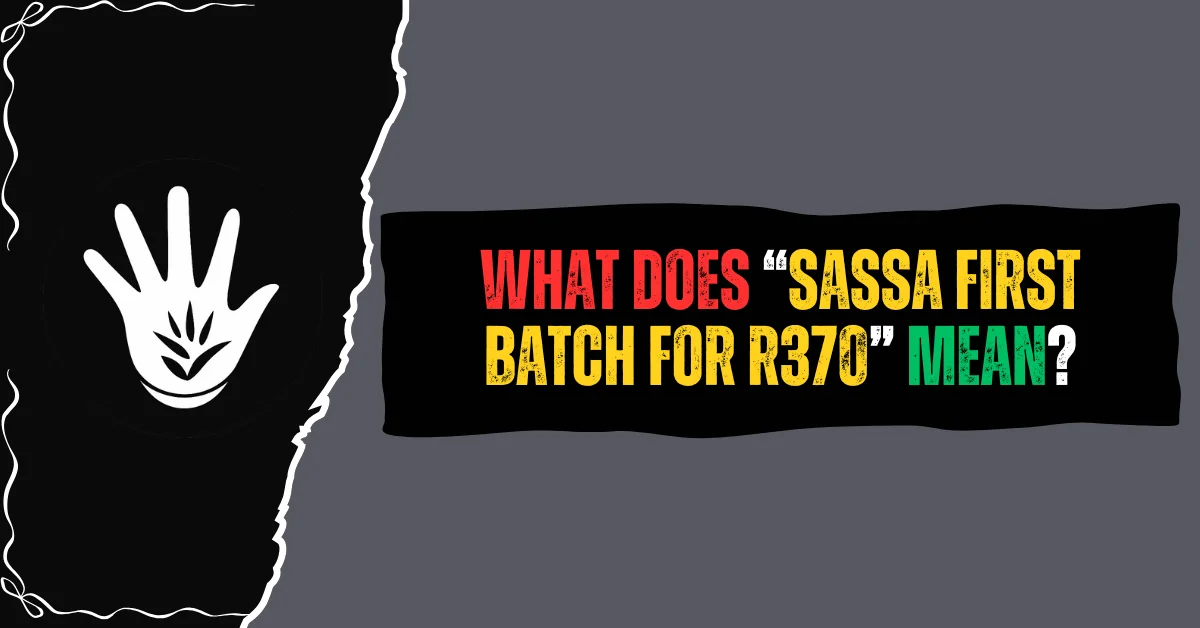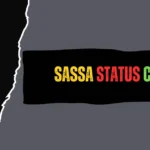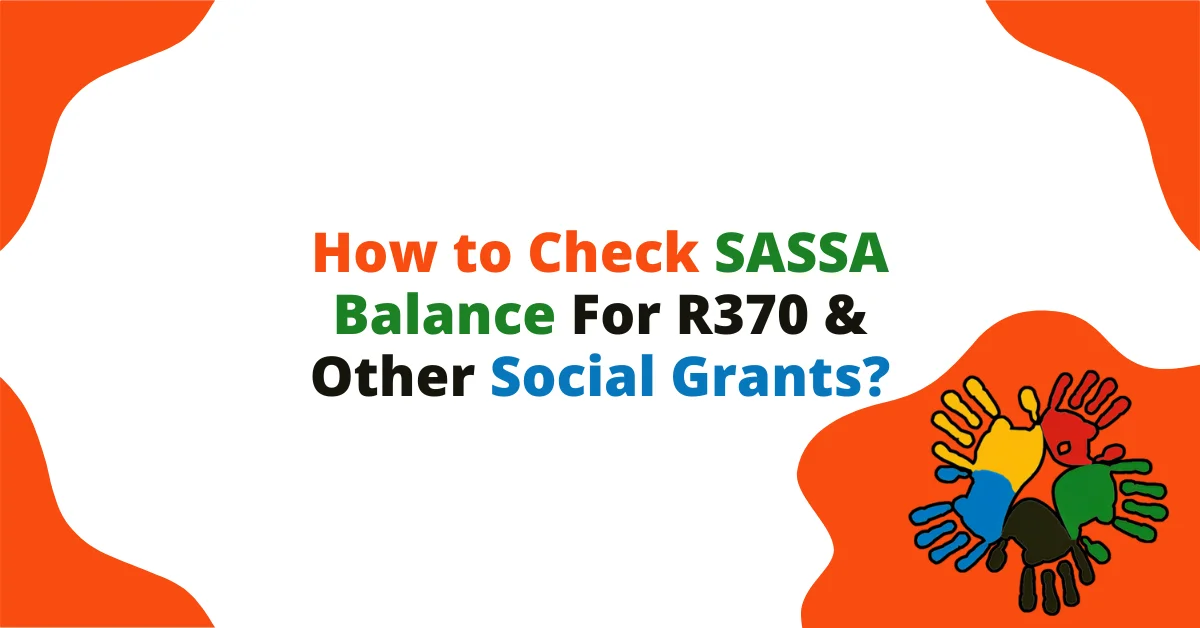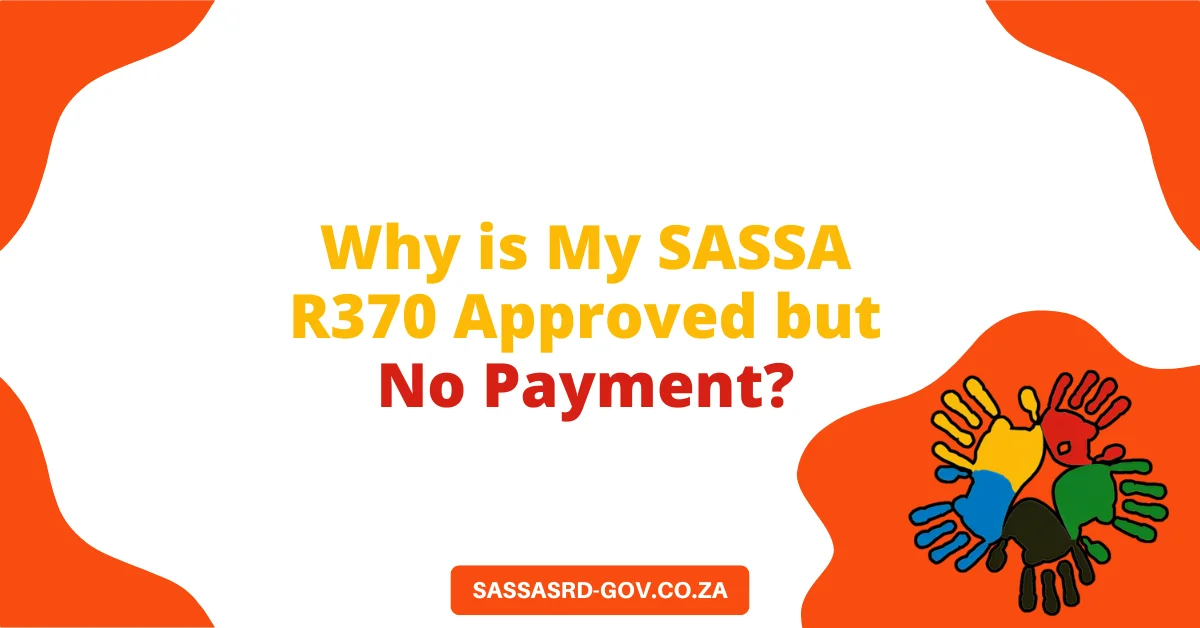Have you ever wondered why some South African Social Relief of Distress (SRD) beneficiaries receive their R370 payments earlier than others?
This difference usually comes down to the SASSA first batch, a term that sparks curiosity every month among applicants waiting for their grants.
What Does “SASSA First Batch for R370” Mean? (Quick Answer)
The “SASSA First Batch for R370” refers to the first group of approved SRD grant beneficiaries whose payments are processed and released earliest. SASSA issues SRD R370 payments in batches to manage millions of transactions, with deposits typically starting after the 20th of each month and continuing in stages.
Understanding the “First Batch” Concept
When people talk about the SASSA first batch for R370, they’re referring to the initial group of approved applicants whose payments are processed and released first. These individuals usually see their funds reflected in their bank accounts before others because their applications were verified and approved early in the cycle.
The South African Social Security Agency (SASSA) manages millions of SRD applications each month. Since not all payments can be processed at once, SASSA releases funds in multiple batches throughout the month.
Being in the first batch means your grant has cleared all the checks and moved to the payment-ready stage sooner than others.
What Is the SASSA R370 Grant?
The R370 Social Relief of Distress (SRD) Grant is a temporary social assistance program managed by SASSA under the Department of Social Development (DSD).
It provides monthly financial aid to unemployed South Africans who meet the eligibility criteria set by the government. This support is vital for millions of citizens struggling to afford food and basic needs, especially after the economic challenges caused by COVID-19.
Each month, SASSA reassesses every applicant’s eligibility using data from key government entities such as:
- South African Revenue Service (SARS)
- Unemployment Insurance Fund (UIF)
- Department of Home Affairs (DHA)
- National Treasury
Only those who pass these checks without showing any source of income or support are approved for that month’s payment.
How Does the SASSA Batch System Work?
SASSA’s batch system is not officially published, but it’s a commonly observed pattern by applicants who track their grant progress. Essentially, the system divides applicants into smaller groups or “batches” to manage the massive volume of transactions efficiently.
While SASSA does not publicly label people as “Batch 1” or “Batch 2,” community discussions often use these terms to describe when certain applicants receive payment notifications.
Here’s how it generally works behind the scenes:
- Verification Phase – SASSA cross-checks your ID, bank details, and income status using national databases.
- Approval Phase – Once your eligibility is confirmed, your application is marked “Approved” with a specific Payday Date.
- Payment Queue – Approved applicants are grouped and released in different processing waves. The first batch gets paid earliest, followed by others in later waves.
This staged approach ensures that banking systems and SASSA servers don’t get overloaded, which helps prevent payment delays or technical errors.
Unofficial ID-Based Batch Grouping
Among SRD beneficiaries, a popular belief is that your ID number’s last three digits determine your batch. Although not officially confirmed by SASSA, this pattern appears to hold true in many cases.
Below is a simplified example of how applicants interpret the unofficial batch order:
| ID Number (Last 3 Digits) | Unofficial Batch Group |
| 080 | Batch 1 |
| 081 | Batch 2 |
| 082 | Batch 3 |
| 083 | Batch 4 |
| 084 | Batch 5 |
| 085 | Batch 6 |
| 086 | Batch 7 |
| 087 | Batch 8 |
| 088 | Batch 9 |
| 089 | Batch 10 |
While this ID-based tracking helps some people predict when they might be paid, it’s important to remember that SASSA has not made this method official. Payment timing can still vary based on banking verification, system updates, and reassessment results.
Why SASSA Uses a Batch System?
Processing over 10 million SRD applications monthly requires an organized system. Here’s why SASSA uses a batch-based release structure:
1. System Management
Paying all beneficiaries at once could crash servers or overwhelm banking networks. Batch releases spread out the processing load and keep systems stable.
2. Monthly Eligibility Reassessment
Each month, SASSA re-verifies every applicant’s financial situation. If someone’s income changes or new data shows employment or support from another source, their payment is delayed or declined. This monthly means test ensures only those who truly qualify receive the funds.
3. Verification Accuracy
Staggered batches allow SASSA to perform detailed fraud checks and confirm banking details without error. This helps reduce issues like failed payments, duplicate approvals, or delayed status updates.
How to Know If You’re in the SASSA First Batch?
The easiest way to confirm your status is through official SASSA channels. Follow these simple steps:
1. Visit the Official SASSA SRD Website
Go to https //srd.sassa.gov.za /sc19/auth
2. Check Your SASSA Status
Enter your South African ID number and the cell phone number used in your application, and click on “Submit”.
3. Review Your Monthly Result
You’ll see one of several status results: Pending, Approved, Declined, or Reapplication Required. If “Approved” appears along with a Payday Date, it usually means your payment is queued, possibly within the first batch.
4. Monitor Your Bank Notifications
Banks like Capitec, FNB, and Standard Bank often reflect incoming deposits within 2 to 3 working days once SASSA releases payments.
Remember, SASSA does not send exact payment times via SMS or WhatsApp. Always rely only on the official website for updates.
Why Some Beneficiaries Get Paid Later?
Even if your application is approved, delays can still occur. Here are a few common reasons:
- Bank Verification Pending: Your banking details may still be under review.
- Reassessment in Progress: SASSA might still be verifying your income status for that specific month.
- System Delays: Technical issues or high traffic on the system can push back your payment date.
- Reapplication Issues: If your information was outdated or incorrect, it can slow down processing.
If your status remains “Pending” for a long time, check your details on the SASSA portal and ensure your bank account is active and matches your ID number.
How to Avoid Delays and Stay in Early Batches?
To increase your chances of getting into earlier payment groups, make sure your application remains up-to-date and valid every month. Here are some tips:
1. Keep Banking Details Updated
Update your information only on the official SASSA SRD portal. Using incorrect or mismatched bank details is one of the biggest causes of payment delays.
2. Use a Personal Bank Account
Payments sent to someone else’s account may be flagged for security reasons. Always use an account registered in your own name.
3. Submit Reconfirmations on Time
If SASSA requests reapplication or verification, respond quickly to avoid being placed in later batches.
4. Check SASSA Status Regularly
Keep an eye on your SASSA status every month to catch any issues early.
SASSA Official Payment Dates vs. SASSA Batches
It’s important to separate the concept of “batches” from official SASSA payment dates. SASSA only releases confirmed payment dates after processing all eligibility checks. Batches simply determine the order of processing, not the official payday itself.
For example, the first batch might receive payments between the 1st and 5th of the month, while later batches might follow in the second or third week.
Always check the Payday field on your SASSA status page for the exact release date.
Key Takeaway
The SASSA first batch for R370 simply means your application was approved and prioritized for early payment processing. While community groups often use “batch numbers” to estimate when funds will reflect, the only official confirmation comes directly from the SASSA SRD website.
By keeping your details accurate, monitoring your status, and following official updates, you can ensure your SRD R370 grant arrives without unnecessary delays, whether you’re in the first batch or not.

My name is Sibongile Nkosi, and I create clear and practical guides to help people understand SASSA Services with confidence. I’ve spent years learning how these systems work, and I enjoy explaining everything in a simple way so you can solve your problems quickly, without stress.
Contents
- 1 What Does “SASSA First Batch for R370” Mean? (Quick Answer)
- 2 Understanding the “First Batch” Concept
- 3 What Is the SASSA R370 Grant?
- 4 How Does the SASSA Batch System Work?
- 5 Unofficial ID-Based Batch Grouping
- 6 Why SASSA Uses a Batch System?
- 7 How to Know If You’re in the SASSA First Batch?
- 8 Why Some Beneficiaries Get Paid Later?
- 9 How to Avoid Delays and Stay in Early Batches?
- 10 SASSA Official Payment Dates vs. SASSA Batches
- 11 Key Takeaway




![All Types of SASSA Grants in South Africa All Types of SASSA Grants in South Africa [2025]](https://srdsassacheck.web.za/wp-content/uploads/2024/12/What-Does-Null-Mean-in-SASSA-R370-Payment-Dates-Status-65.webp)
![SASSA Reapplication for SRD R370 & Other Grants in [2025] SASSA Reapplication for SRD R370 & Other Grants in [2025]](https://srdsassacheck.web.za/wp-content/uploads/2024/12/What-Does-Null-Mean-in-SASSA-R370-Payment-Dates-Status-58.webp)
![SASSA Reapplication for SRD R370 & Other Grants in [2026] SASSA SRD Reapplication for SRD R350 (Now SRD R370) & Other Grants](https://srdsassacheck.web.za/wp-content/uploads/2025/10/SASSA-Reapplication-for-SRD-R370-Other-Grants-150x150.webp)